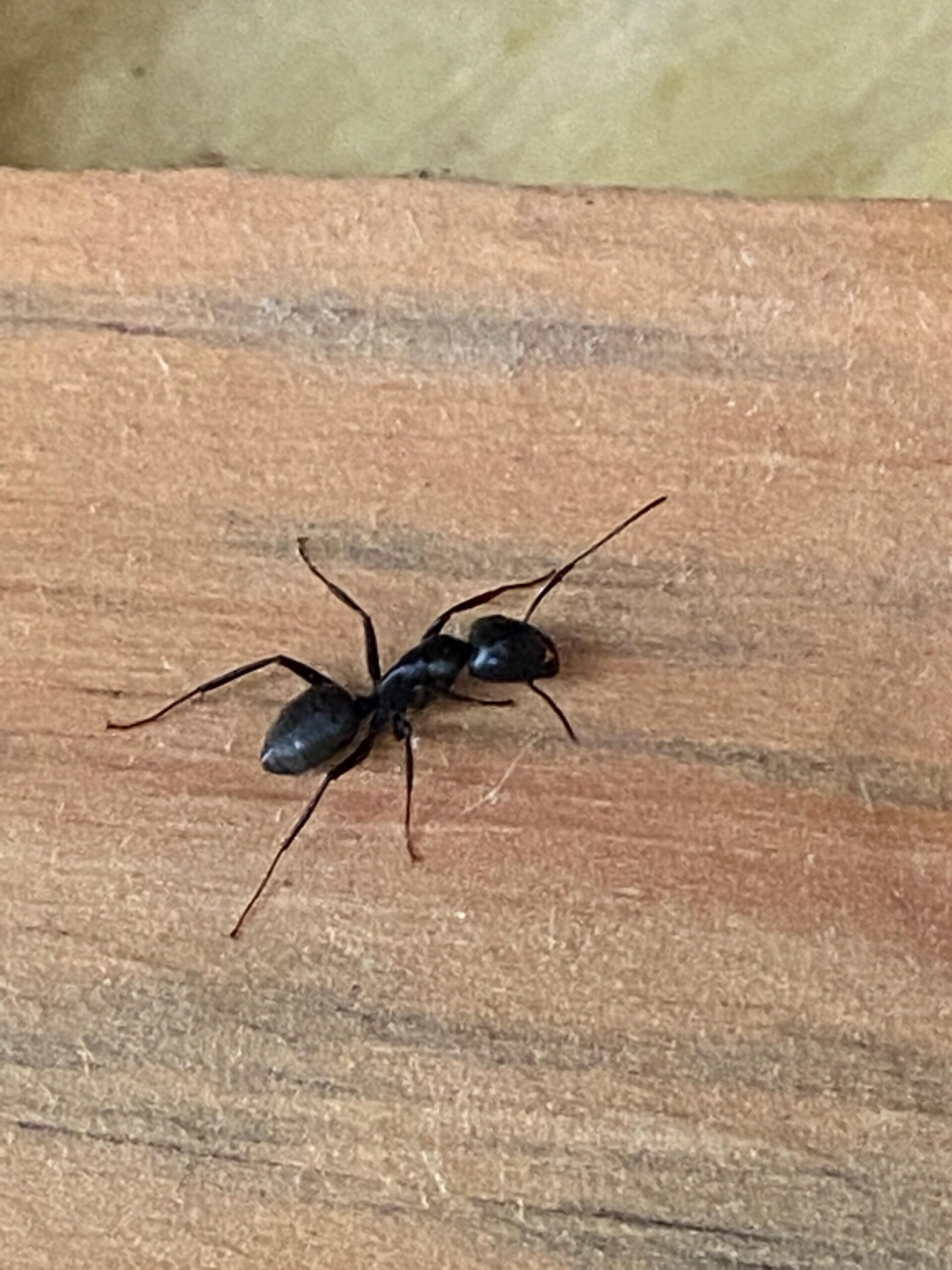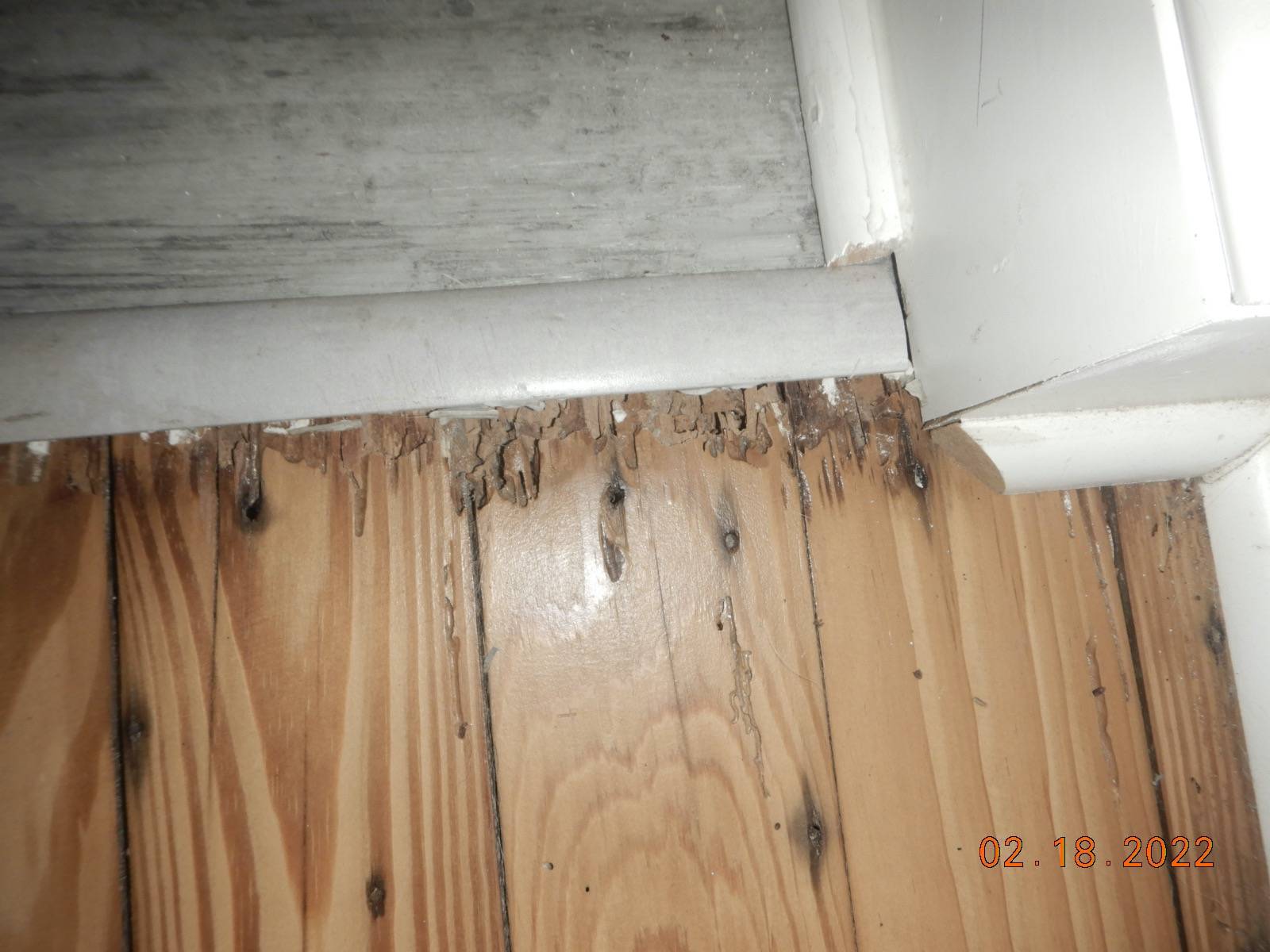The carpenter ant, who can be found in most states East of the Rocky Mountains and Southeastern Canada was discovered and named in 1773 by scientists and was the first North American ant to be professionally named.
Carpenter ants did not receive their name due to their ability to build wonderful artistic structures. These critters are pests and they do get their name because of their ability to burrow into wooden structures like doors, beams and cabinets leaving destruction in their tiny wake.
Carpenter ants typically build their nests in hollow trees, landscaping timbers, logs, posts, and wood used in homes and other structures. Their nests (eggs, larvae, pupae) are in wood and have gaps in insulation and wood framing.
Also unlike termites, carpenter ants generally take years to cause significant damage. A carpenter ant infestation within a building usually means that there is a moisture problem. For instance, these critters are often found around dishwashers, sinks, laundry areas, and bathrooms – especially where plumbing leaks.
Carpenter ants measure from 3.4 to 13 mm in length and can feature black, red, brown, yellow, orange, or red and black coloration. Although carpenter ants are among the largest ant species worldwide, size is not a reliable factor in carpenter ant identification because workers within a species vary in size.

During late spring and early summer, winged males and females of carpenter ants fly together in nuptial flight. Mating occurs in midair, after which the queen loses her wings, locates or excavates a small cavity in wood, and seals herself in the chamber, remaining alone until her first brood develops into adult workers. At first, the queen lays a few eggs, which hatch into tiny workers. She feeds the workers with her salivary glands until they can forage for food. When the workers reach adulthood, they build and maintain their nests.
Sometimes it takes up to six years for carpenter ants to fully develop a large colony of carpenter ants. The queen only takes care of the first generation of a new hive or nest. After the first generation, it’s all hands on deck. The rest of the generations are fed and cared for by the workers. Workers will cut galleries to enlarge the nest as the colony grows. After three years or more, winged males and females are produced, and they engage in nuptial flights.
Homeowners who do not seek immediate pest control services may be looking at extreme damages that require expensive repairs or replacements for wooden structures in your home.
Carpenter ants feed on nectar, fruit juices, and dead and live insects. They can find their way into buildings, including homes, and create nesting sites if they find the outside environment unsafe for them.
Unlike termites, carpenter ants don’t eat up the wood. They only excavate it to build their nests, and if in large colonies, the ants are capable of creating multiple tunnels and galleries.
It will destroy the curb appeal of the wooden structures in your home.

Usually, the excavation works of carpenter ants begin at a small section of the wood with water damage or decay signs. The burrowing activities could become extreme, leading to large holes inside the wooden structures. It can, in turn, damage the structural integrity of the wooden items. Extreme damage to wooden structures in your home is imminent if you do not notice the excavation activities early enough and contact a pest control expert to manage the situation.
Some of the early signs of carpenter ant invasion include the presence of wood shavings in the form of sawdust near the affected wooden structures, rustling noises inside the wood, and winged ants creeping or falling off from ceilings and walls. It may be difficult to notice carpenter ants because they mainly build their nests in wooden structures to live. The ants eat a wide range of foods, so you may not find them in your kitchen cabinets or sinks looking for leftovers. Since it’s hard to identify the ants, you can call in a Paramount Pest Solutions technician who specializes in carpenter ants to examine your home for any signs of the ants.
You can prevent carpenter ants from infesting your home in many different ways. Some include trimming trees in your yard and removing any wooden structures with water damage or decay signs.
If you find pest management activities strenuous, time-consuming or confusing, look for a certified pest control specialist. The small investment you pay to hire experts with Paramount Pest Solutions can save you exponentially in the future.
Call Paramount Pest Solutions at 228-896-PEST (7378) or email at [email protected]


